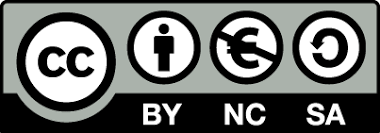Abstract
This study aimed to evaluate the access to cataract surgery as well as the factors associated with cataract surgery between patients under Civil Servant Medical Benefit scheme (CSMBS) and those under Universal Coverage scheme (UC) using the data containing (1) the CSMBS and UC inpatient data during January 1, 2003 and December 31, 2007 obtained from the Central office for Healthcare Information (CHI) and (2) data of patients participating in the cataract surgery project, the National Health Security Office (NHSO). Moreover, this study also assessed the cost-effectiveness analysis of cataract surgery using a foldable compared to a rigid intraocular lens in Thailand using decion tree model based on healthcare provider’s perspective.
Based on the results regarding the access to cataract surgery, it was shown that patients with cataract in Thailand especially those under UC increasingly received cataract surgery every year. In addition, most UC patients (96.9%) performed cataract surgery in the provinces where they had UC eligibility and the rest had cataract surgery in other provinces. Large provinces had higher cataract surgery rate and the provinces where there were one more ophthalmalogist would have cataract surgery rate 52 times higher. Furthermore, based on the factors associated with cataract surgery, patients under CSMBS were 22 times more likely to be performed cataract surgery using foldable intraocular lens compared to those under UC. The patients with rigid intraocular lens had significantly more complications than those with foldable intraocular lens. In addition, patients being performed cataract surgery at teaching hospitals or private hospitals had significantly higher complications than general hospitals.
The cost-effectiveness results of cataract surgery using a foldable intraocular lens compared with a rigid intraocular lens showed that if third party payers had willingness to pay (WTP) less than 200,000 Baht per quality adjusted life year (QALY), using foldable intraocular lens would not be cost-effective. When comparing to the previous decisions made by the subcommittee of the development of benefit package and service system, NHSO, they tended to not invest on the health technology which incremental cost-effectiveness ratio greater than 200,000 Baht. The result of this study is in accordance with the NHSO policy and practice guideline which has supported the cataract surgery using a rigid intraocular lens. However, if WTP per QALY is changed or increased in the future, there will be a little probability that cataract surgery using a foldable intraocular lens is more cost-effective compared to a rigid intraocular lens.
In addition, our research team also surveyed the prices of foldable and rigid intraocular lens in order to calculate how much saving would be based on assumed scenarios. If the reimbursement amount for foldable and rigid intraocular lens equal to the surveyed prices, the government would have cost-saving of 55 million Baht. Moreover, If the reimbursement amount equal to the surveyed price of rigid intraocular lens, both CSMBS and UC schemes would have cost-saving of 144 million Baht. Therefore, if the organizations responsible for reimbursement amount could determine the appropriate reimbursement amount of intraocular lens, it would help saving a huge budget which could be allocated to other necessary healthcare services.
Based on all study results, policy recommendations are summarized as follows. First, the government should allocate the budget for special training on ophthalmology especially in the provinces where lack ophthalmologists. Second, our results indicated that using rigid intraocular lens was more cost-effective, so that the reimbursement amount equal to the price of rigid lens would be appropriate. Third, patients should be correctly educated on using rigid and foldable intraocular lens, since they might be persuaded by healthcare providers to pay more. Lastly, the price of intraocular lens based on the survey was much more inexpensive than that of NHSO and the Comptroller General’s Department. The price of rigid intraocular lens could be decreased by four times, and that of foldable lens could be reduced by 50%. Therefore, the reimbursement amount on the prices of both rigid and foldable intraocular lens should be reviewed and revised in the future.


